A Look at the Gradual Growth of Sledge Hockey in Canada
Researchers, Coaches, and Players Take Part in Spreading the Sport Across Canada
Winter sports were something Véronique Major regularly engaged in. She wasn’t much of a skater, but the Quebec native enjoyed cross country skiing and snowboarding.
It wasn’t until the Concordia student’s accident that she would be pushed in a different direction.
When she was in Saguenay, Major’s head turned to sledge hockey. Players from Montreal came to introduce the sport and it piqued her interest. When Major traveled back to Quebec City, she tracked down a local club and started to play for Les Quebecoises.
Sledge hockey is the ice hockey alternative for para-athletes with lower body disabilities, according to the Canadian Paralympic official website. Players perch themselves on a bucket, which is attached to a frame with two blades attached to the bottom of the sled.
Unlike traditional ice hockey, sledge players handle two curved sticks. Spikes are attached on the bottom of them, allowing players to dig into the ice and push both arms forward in order to glide.
Preparing to debut in a new sport, Major was making her way into unfamiliar territory. Having never played hockey, let alone sledge hockey, the rules, strategies, where to go, and how to play presented a new challenge.
“Sometimes I didn’t understand why I got penalties,” recalled Major.
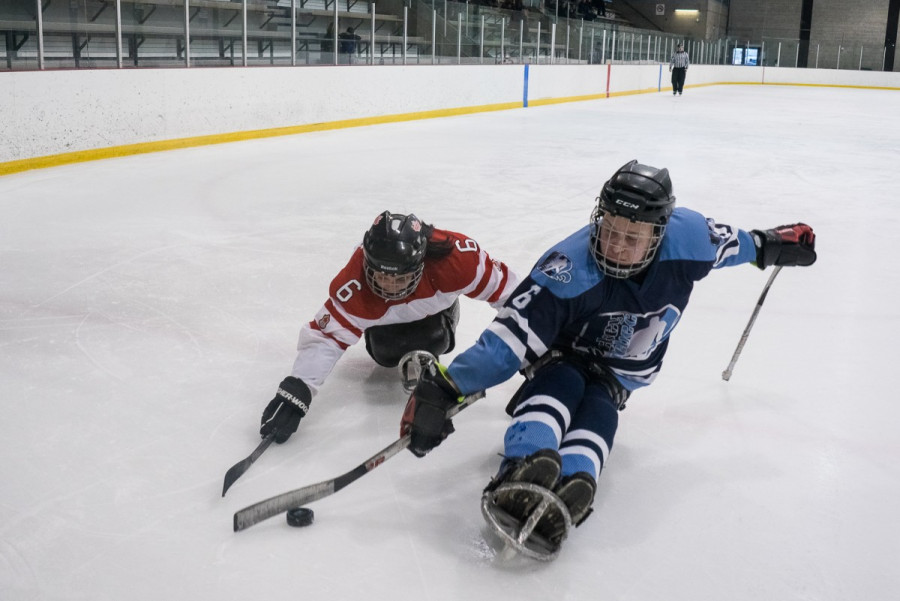
After skating her way into a new sport in January 2013, two years after her accident, it took Major a full season to become well-versed in the regulations of the sport.
Now that Major has gotten used to the rules of the game, it has come down to acquainting herself with her surroundings on the ice—which strategies were appropriate in a particular situation. Major, who now plays for Canada’s para-ice hockey team, said she’s trying to learn the most she can in the meantime.
The intensity on the ice is relentless. It’s stop and go, described Major. Cardio is crucial, and players have to constantly follow the game, know when to slow down and accelerate at the right moment.
“It’s pretty intense,” she added.
There’s no avoiding the physicality of the game, constantly propelling your shoulders forward, trying to gain possession of the puck, all while struggling to avoid being pinned on the boards surrounding the ice surface. The sport is demanding on the body, but what Major and her teammates are scared of most is concussions.
“I’ve had some pretty hard hits,” said Major. “I know some teammates that had concussions falling on the ice or getting hit. “Personally I [haven’t had any] since I’ve played.”
While concussions are a recurring injury in hockey, muscle overuse has been just as common, specifically in the shoulders.
Alicia Gal, who is currently pursuing her Ph.D at Carleton University’s Biomedical Engineering program, is aiming to help improve the sport overall, with her focus being injury prevention.
Gal’s research is centered on community-level sledge hockey. She added that the buckets that players sit in at this level of playing are “very basic, plastic, tiny seats.” Sledge hockey equipment hasn’t been modified since it came out, said Gal.
“I really liked the feeling of being on a [sled], moving around and feeling free to play a game like everybody else.” — Véronique Major
At first, Major didn’t have a sled of her own and had to rent one during her first two seasons. It wasn’t properly adjusted to her size, nor was there proper cover at the front. It was difficult, she said, but this didn’t hinder her experience when she first took to the ice.
“The first time I tried sledge hockey, I really liked the feeling of being on a [sled], moving around and feeling free to play a game like everybody else,” said Major.
Gal added that the change to carbon fibre sticks for the players is a good start. Carbon fibre is lighter while also being a stronger material.
The constant use of the shoulders puts a strain on them. Carbon fibre material can reduce the force that causes the overuse of the shoulder muscles.
Though equipment design is one aspect of the sport Gal wants to see improved, her research investigates other functions within the sport, such as a player’s stroke and arm movements, as well as the muscle contractions, all through different technologies. She is specifically looking at internal trauma of the shoulder.
Related: Mentorship Program Gives Space for Women to Practice Sledge Hockey
Maxime Gagnon, head coach of Team Quebec, said that the program is currently working on active practice, off the ice, to be sure players are working better on their physical shape. For Gal, her study looks in depth in sledge athletes’ body structure and movements, called biomechanics.
“Looking at one stroke you can look at so many things,” said Gal. “By using the technology that we’re trying to work with, it will be able to give us a much more accurate sports specific environment [and] more accurate information.”
The biomechanics of the sport, said Gal, would be improving the stroke and balance of the sledge. Being able to get players to point the stick in the right direction or by changing their body composition to lean forward a bit more, while being more cautious on the sled, could reduce the forces being transferred into motion, rather than into the body.
To be able to track muscle movement in the body, Gal and her team use something called Electromyography, or EMG for short.
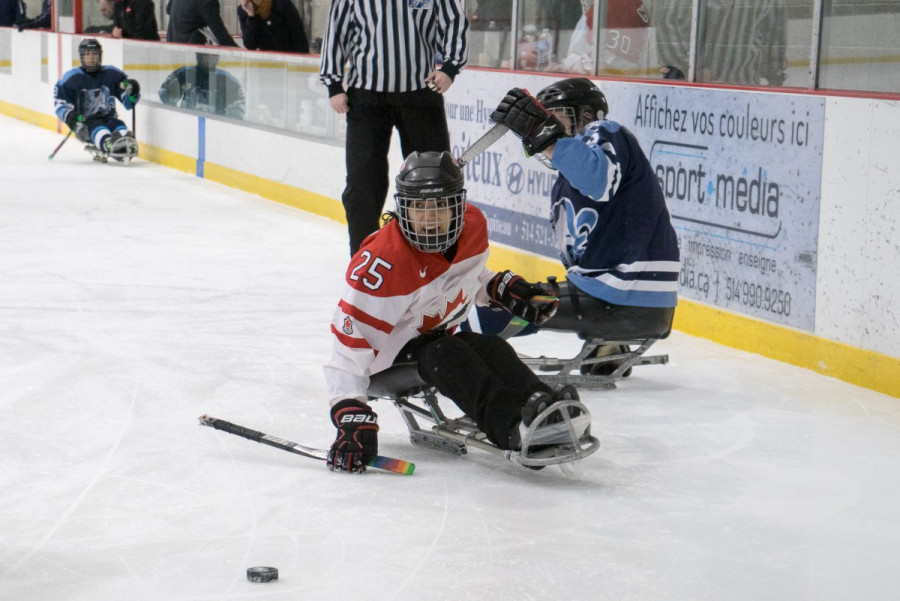
EMGs are able to collect the voltage of a muscle. Then there’s a contraction, where the muscle gives out electrical activity called a biological signal, Gal said. They’re used to see which muscles are being used and which ones aren’t, so that players can start focusing on specific areas of their body to help make them stronger.
“These sensors are on the outside of the skin, and when you put them in the right spots, they should be able to pick up the muscle being activated,” she said.
Time for a Change
Gal hopes to help develop sledge hockey in Canada. Gagnon and Major share the same sentiment. Though Gal hopes to improve the physicality of the sport, Gagnon’s goal is to encourage more players to participate in sledge hockey. He wants to help popularize the sport among youth, although he acknowledged the difficulties of doing so.
Gagnon said that the distance across Canada is what is hard about promoting the game. He added that, overall, parasports aren’t as widely recognized.
Major wants to see an exclusive women’s team have a place in the Paralympics one day. But Major also said that players who come from regions such as Saguenay or Sherbrooke aren’t coached as well as players in Montreal.
“They need more skilled coaches, they need more development.”
Since 1994, sledge hockey has been part of the Paralympic Winter Games, but there’s only been a men’s team. Gagnon agrees with Major, and wants to also see women’s sledge have their spot in the Paralympics games.
“I [don’t think] we have enough team sports for women only,” said Gagnon. “We developed for men, and we have to develop for women at a team level [with] the same energy.”
According to the Women’s Sledge Hockey Team of Canada head coach, Tara Chisholm, a spot in the Paralympics is one of the organization’s “major goals”.
“We would want gender equity in that sense,” she said. “Like women in stand up hockey or [who are] able bodied, we want an opportunity to also show that women are great hockey players in their own way.”
Janice Coulter, the President of Women’s Sledge Hockey Team of Canada, stated that the organization submitted an application to the International Paralympic Committee. She said it hasn’t been accepted or denied at this point, but also admitted that there is still work to be done for it to be considered.
Canada and the United States are currently the only nations who have women’s teams, while the other national teams, such as Europe, are a collective of countries. For a women’s tournament to be granted into the Paralympic games, teams in continents like Europe need to break up into their individual countries.
Coulter said that the women’s national program has been working to become leaders in the sport, in order to help other nations develop and grow. Chisholm and her coaching staff have run development camps in Great Britain, and they’ve since established a women’s team. They also traveled to South Korea in the fall to run another development camp for the international paralympics committee where coaches and players from 13 countries were represented.
Although there are still missing pieces for the women’s game to participate in the Paralympics, Chisholm said the committee has shown their support.
“They want women to participate in sledge hockey and want the sport to grow. So that’s really exciting for us,” she said.

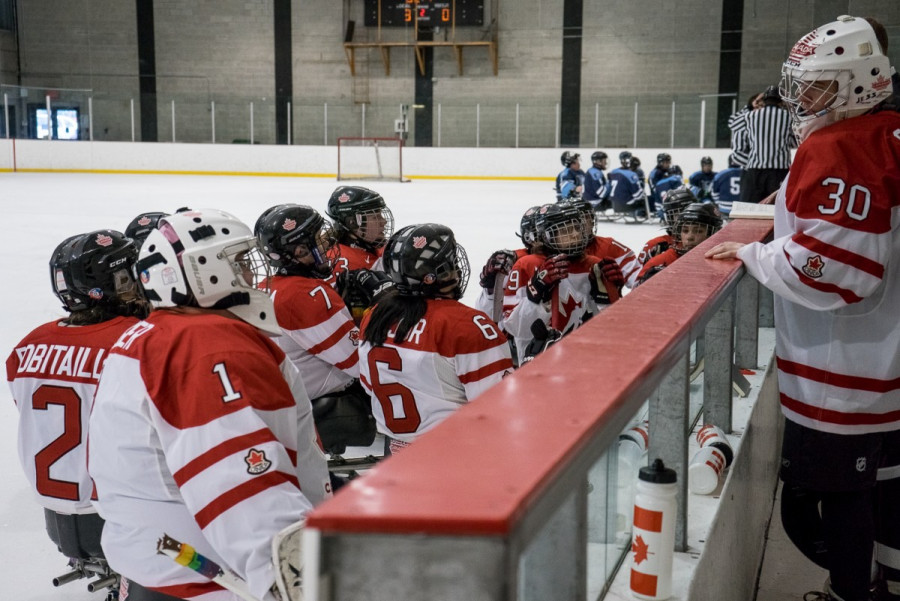
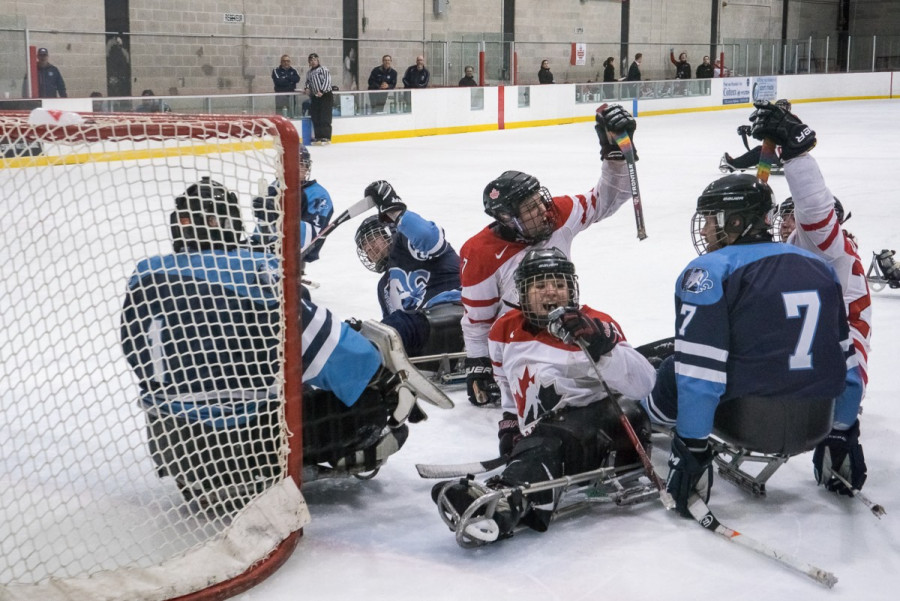
_600_832_s.png)

4_600_375_90_s_c1.jpg)
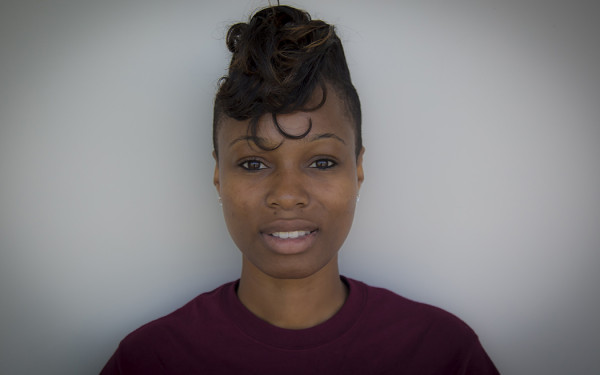
2014_600_375_90_s_c1.jpg)
1_600_375_90_s_c1.jpg)